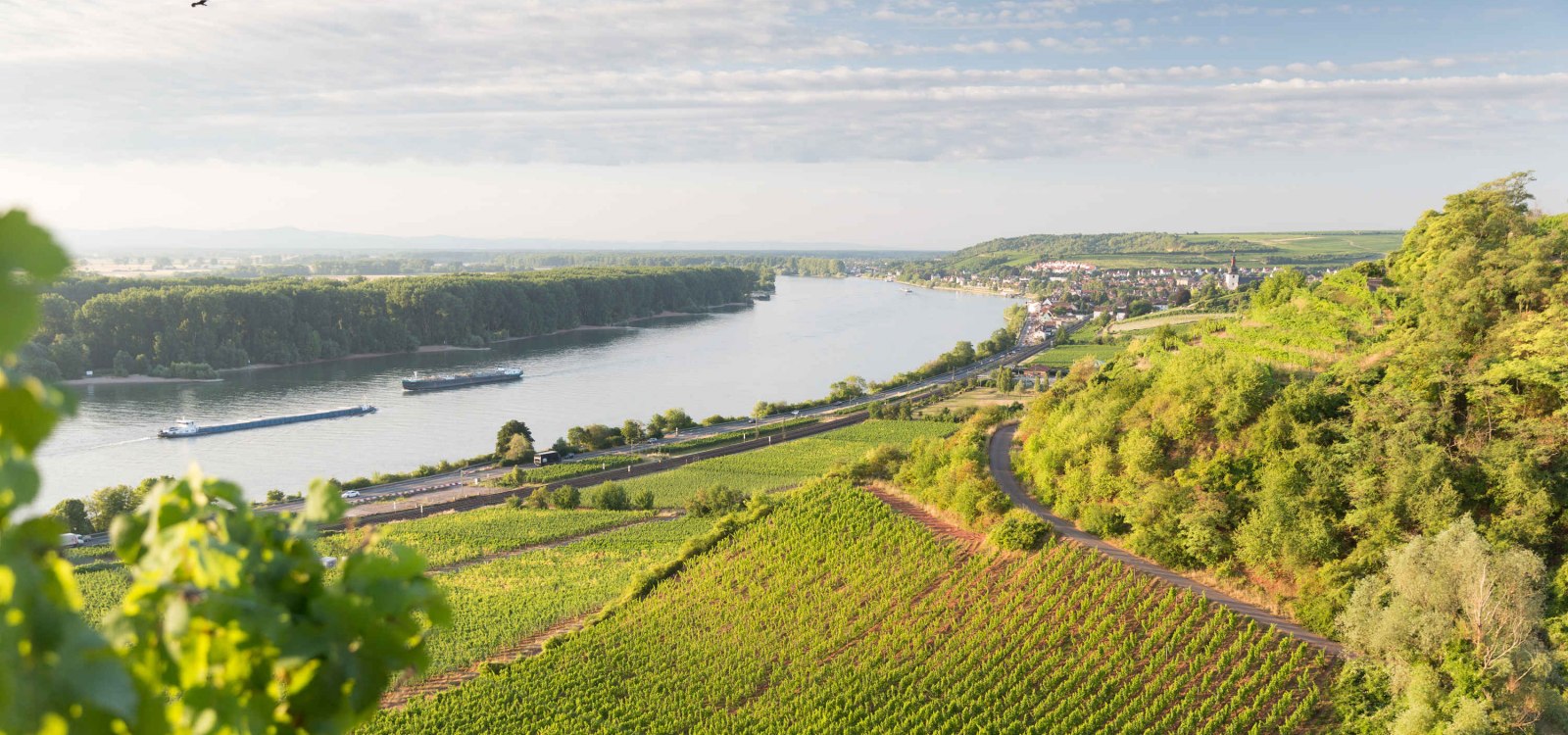Umbrellas are largely unknown in Rheinhessen. The low levels of precipitation and the expertise of the winemakers make this large wine-producing region along the Rhine ideally suited for organic viticulture—so it is no surprise that Rheinhessen holds a leading position in this field in Germany.
Rheinhessen is Germany’s largest wine-growing region. It is also a region with a long tradition of winemaking, dating back over 2,000 years when the Romans first brought wine to the Rhine.
Protected by the Donnersberg, Taunus, and Hunsrück mountains, and benefiting from its proximity to the Rhine and fertile soils, Rheinhessen has proven to be an excellent location for high-quality viticulture. Along the Rhine and in the rolling hills, the sun shines for around 2,000 hours per year, and with an average annual precipitation of only 560 mm, Rheinhessen is one of Germany’s driest regions. The average annual temperature is 10.7°C. Wine is everywhere: in 133 of the 136 municipalities within the expansive triangle of Mainz, Worms, and Bingen, vineyards are planted.
Structural Change in Rheinhessen
The structural transformation in Rheinhessen is remarkable. Many wine estates are expanding, and no vineyard land is left fallow. Around 2,000 wineries are active in Rheinhessen, half of which focus on bottled wine marketing. The average size of a Rheinhessen wine estate now exceeds 10 hectares of vineyard land. However, it is primarily the larger estates that are expanding. Many family-run wineries have already surpassed the 20-hectare mark. This development is possible only because winemakers apply great innovative strength and take advantage of technological advancements and cooperative efforts in the vineyard and cellar.
With 27,500 hectares of vineyards, Rheinhessen is Germany’s largest wine-producing region. It is not only the Rieslings from the Rhine and the rolling hills that are making waves and competing at the highest international level. The region’s traditional grape variety, Silvaner, is also regaining recognition, particularly as a dry food-pairing wine. In addition to Riesling and Silvaner, the classic white Burgundy varieties are also on the rise. The limestone-rich soils of Rheinhessen provide ideal conditions for Weißburgunder (Pinot Blanc), Grauburgunder (Pinot Gris), and others.
The vineyards between the Rhine and the rolling hills are divided into three areas—Bingen, Nierstein, and Wonnegau. At the top of Rheinhessen’s classification pyramid are 414 single vineyard sites.

